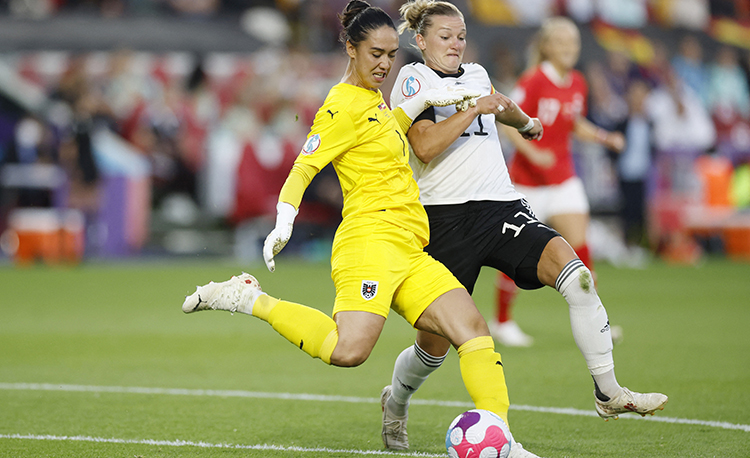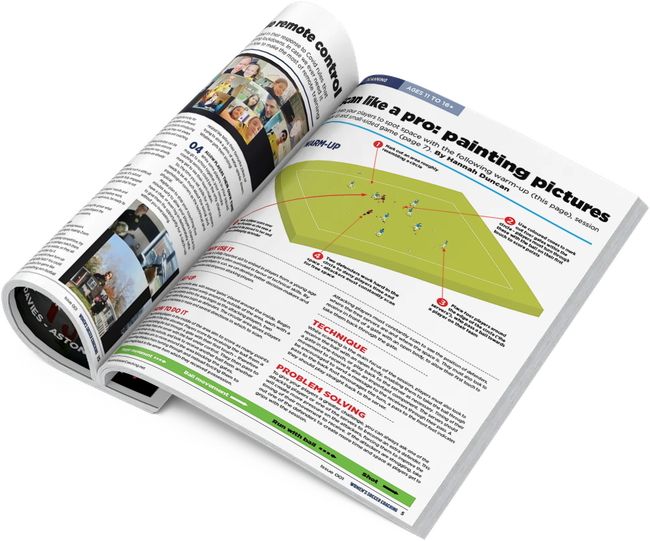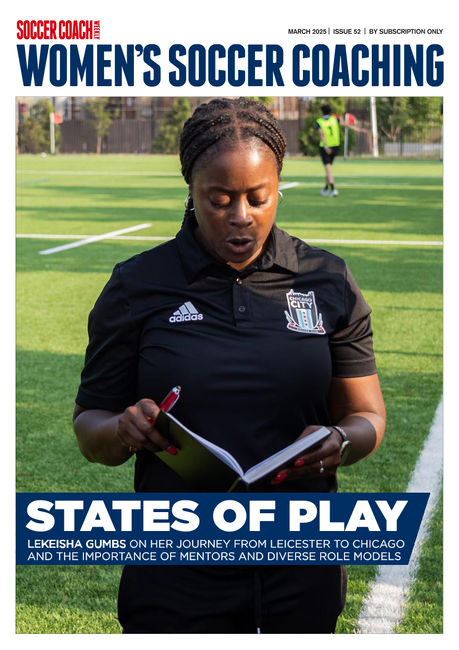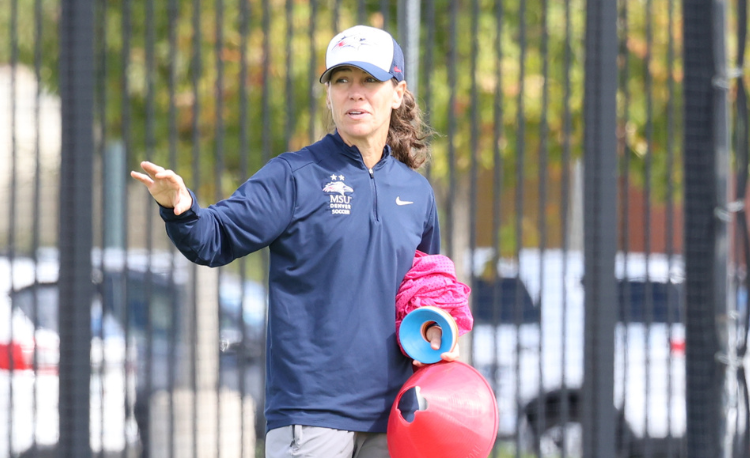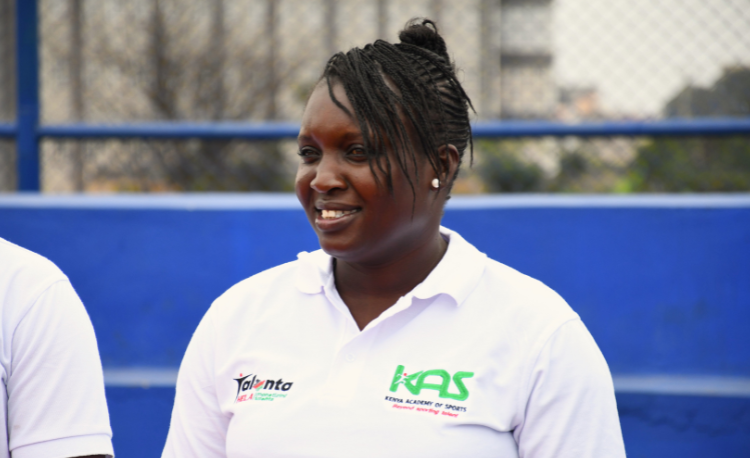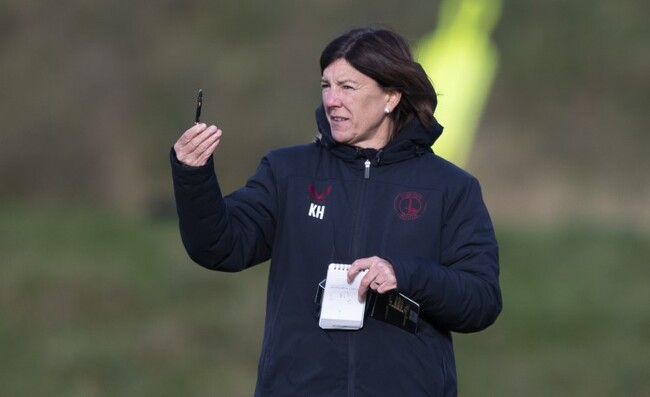You are viewing
1 of your 3 free articles
How to coach the modern female goalkeeper
United Soccer Coaches’ director of goalkeeping Lisa Cole tells Steph Fairbairn what makes a good shot-stopper, why they must be included in team training - and how she owes her playing career to a law change...
In 1992, the backpass rule was brought in by soccer lawmakers IFAB - and inadvertantly changed one player’s career.
Introduced to discourage time-wasting, the rule dictates that a goalkeeper cannot handle the ball following an intentional pass from a teammate, made using the foot.
It had a significant effect on the role of the goalkeeper and how they are coached, both technically and tactically.
More specifically, it made a direct impact on Lisa Cole. Now director of goalkeeping at United Soccer Coaches, Cole began her playing career as an outfielder.
“I’m actually a goalkeeper because of the rule change,” she told Women’s Soccer Coaching.
“I played on field but jumped into goal when our goalkeeper was missing. I was good with my feet and I could play in goal, but that wasn’t really valued [before the back pass rule].
“Being big, strong and tall, those things all helped - [all] things I’m not. But the new rule initiated this huge change in the qualities we look for in a goalkeeper.
“All of a sudden, I’m starting as a goalkeeper because I can play with my feet and they’re less worried about my height, size and shot-stopping.”
Since 1992, more rule changes have been introduced – the back-pass rule was adjusted to include throw-ins, and, in 2019, a goal-kick was no longer required to leave the penalty area before a teammate touches the ball.
“The new rule initiated this huge change in the qualities we look for in a goalkeeper...”
This trajectory, Cole says, is about goalkeepers “truly being a soccer player first, that just happens to play in goal.”
So what is it that makes a good goalkeeper in the modern game?
“You have to be technically and tactically sound,” Cole explains. “You have to make good decisions and be mentally strong.
“But for me, it’s about taking a holistic approach to the person in front of you.
“I did a presentation the other day and was talking about Briana Scurry, Hope Solo and Alyssa Naeher.
“They’ve all played for the US and been very successful. But who they are and how they go about being successful is very different.
“I’m really hesitant to say ‘here are the key things for goalkeeping’, because then we just go looking for those things and you’d miss out on two of those three players, because they’re not the same.
“You always have to think about what a goalkeeper’s strengths are, and how you maximise the potential of whoever’s in front of you.”
It may sound obvious, but getting the player in front of you is the first step. Gone are the days when it was acceptable for goalkeepers to be given less training and focus than the on-field players.
Debate has long raged about the size of goals for female ‘keepers and the standard of goalkeepers in the women’s game.
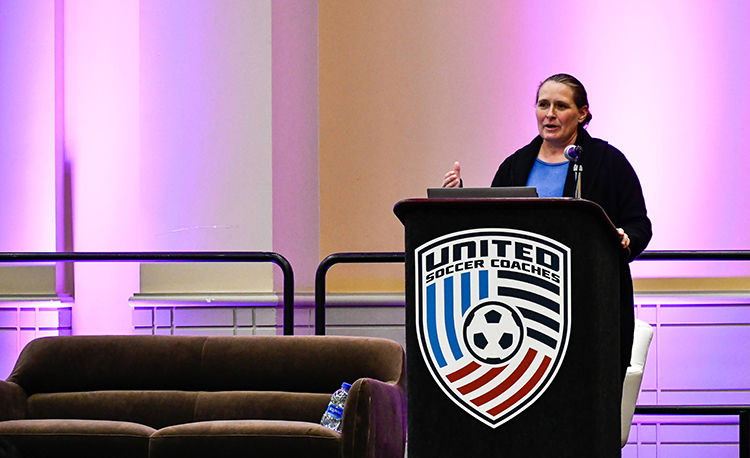
For Cole, it comes down to the access to, and the quality of, tailored goalkeeping coaching.
“I didn’t have a goalkeeper coach through a lot of my career,” she shares. “I was just making it up as I went along.
“At 16 or 17, I made the Olympic Development Programme, so I got a goalkeeper coach - but only in that environment, not in my regular environment.
“For us, part of the evolution has been finding our place, and part of that has been playing first, then going back and saying, ‘If I’d known those things sooner, I would’ve been a better goalkeeper’.
One of Cole’s missions is to get more top-level female keepers into coaching.
“It’ll help us because they understand the position better,” she says. “The block save, for example, really wasn’t part of the game when I was playing. I find it harder to coach because it wasn’t something I did.
“But if you are somebody that’s played the position, it’s easy for you to go and do that.
“I’m really excited about the young female goalkeeper coaches out there, but the key will be if we keep them in the game, because the coaching profession for a woman, especially in that position, is difficult.
“Part of the problem is female goalkeepers themselves. They’ll say they want a man because they can kick harder, or the service is better.
“But the truth is you can get people to serve in your environment. I’ve found this as I’ve gotten older: I don’t need to be the one kicking the ball.
“Actually, the coaching happens from me being behind the goal and talking to the goalkeeper.
“If I’m doing the service, I miss stuff while I’m looking down to hit the ball or receiving the ball. I miss little things in their technique.
“We have to do some of the service, but we shouldn’t be doing all of it because there have to be times where we’re actually focused on what’s happening in front of us.”
The integration of the goalkeeper coach into the coaching team is, for Cole, vital. It’s no longer about, she says, training a goalkeeper alone and then throwing them in the team. Yet, it still happens.
“Goalkeeper coaches need to be in meetings when training sessions are being planned...”
“I know there are goalkeeper coaches that don’t have any input into what’s happening at training, and that’s a problem,” she says.
Much like her playing career, Cole’s coaching has been split between on-field and goalkeeping-specific roles.
Alongside the position with United Soccer Coaches, she is currently technical director at the Centre Soccer Association in Philadelphia, but has previously been goalkeeper coach at Florida State University, an assistant coach at the Houston Dash, ex-head coach of the Boston Breakers, and, more recently, the Fiji women’s national team head coach.
These are roles that have allowed her to give goalkeeper coaching and development the prevalence she feels it deserves.
Her message to other head coaches is simple - include us.
“Goalkeeper coaches need to be in all meetings when training sessions are being planned so they know what’s happening,” Cole said. “They know how long they’re going to be with the ‘keeper.
“We’re not ‘goalkeeper coaches’ any more. We’re assistant coaches with a speciality in goalkeeping.
Related Files
“There are good opportunities, if you can, to ask the head coach to steal field players sometimes to do some functional work.
“When I was with the Boston Breakers, we’d have goalkeeper training and the players would fight to get out there, because who doesn’t want to do finishing? Who doesn’t want to hit crosses in and dive around?
“It was actually a competition to be invited out to the goalkeeper training, and it creates a more realistic environment for the goalkeepers if they’re in that environment.
“Then, if the head coach goes onto the field, jumps in and gives some points - or even just celebrates big saves - it makes a big investment in how the goalkeeper feels about what you think of their position.
“But the key is that [for] the whole practice, there should be a plan. You have to be invested throughout the training session.
“You’re behind the goal. You’re helping them shift the defense. You’re listening to their communication. You’re watching where their positioning is - are they in a good spot to go and make a save?
“You should be coaching the whole time and then it should continue to the next line: ‘Hey defenders, I need you to open your hips when you ask for the ball so you can play forward quicker or realize if you can play that back one touch, they can slide it out to the other side’.
“It’s about developing a relationship and trust in the goalkeeper coach to communicate with the next line in front of them. I think it’s really where the game’s going now.”
As much as she challenges head coaches to invest in the development of their goalkeeping staff, Cole challenges on-field coaches of all levels to invest in their goalkeeping knowledge.
"All coaches should be educated in the basics of goalkeeping. Make the investment..."
“I would ask you this: did you play every position on the field? Are you a better defender than you are a midfielder? Or a better midfielder than you are a striker?
“You might feel really comfortable with the defense because you were a defender. Or really good with the attack because you were a forward player. That doesn’t mean you ignore the defenders, or vice versa.
“All coaches should be educated in the basics of goalkeeping.
“The truth is, if you maybe don’t know the technical skills of the position, but you can teach being in a good vertical or lateral position, a lot of the saves will happen because the ball’s going to come through to them and it gives them a chance to make the save.
“Field player coaches - coach their distribution decisions, because what’s the difference between my distribution decision and a center-back’s distribution decision?
“And get a little sense of what’s happening. Right now, goalkeepers are starting your attack. Goalkeepers are part of your game model and how you play.
“They are also your last line of defense, so they’re really important to the game at this point in time. Make the investment.”
And, Cole concludes, you will be investing in far more than just their technical abilities.
“When mistakes happen for a goalkeeper, they’re amplified,” Cole says. “We have to go and pick the ball out of the back of the net. It’s a really tough environment.”
It is true that the role of goalkeeper can be a highly pressurized one.
Isn’t it on us, as coaches, to make sure we offer all the support we can?
Lisa’s tips on integrating goalkeepers with the rest of the team
“Early in the season, I do a goalkeeper finishing session.
“Everybody rotates into goal so you get a backup goalkeeper, or somebody that starts to enjoy being in goal besides one that’s been forced into it.
“More than 80% of what keepers do is distribution. It’s easy to include them in activities where they’re not always right in front of goal.
“If you have in-line players, you can add the goalkeeper there. If they take a bad touch, the field players can run in and pressure them.
“In possession activities, a lot of times goalkeepers are used as a plus player in the middle.
“My preference is to use them on the ends so they’re working in the same way they would in the game as an option.
“Research shows goalkeepers are active for around six minutes of a game. They have to deal with downtime, just watching.
“Have them keep score, have them be the one running the drill, because that’s also what they do in a game.”
Research, eliminating risk and female-specific kit – Lisa on what can be done for goalkeepers in the women’s game
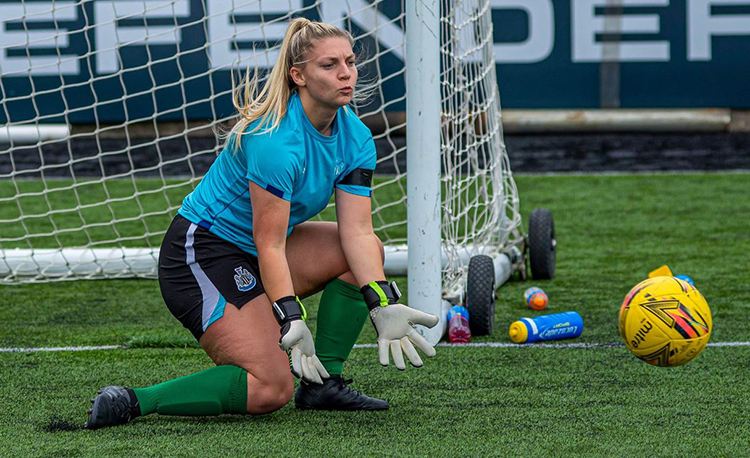
“For goalkeepers, ACL injuries will inherently happen more often when we leave the ground and come back down to land.
“It’s really important to know two things. One is how to properly land and catch yourself. The other is recognizing the menstrual cycle and not doing a crossing day, a high-ball day, or a day where there’s a lot of jumping.
“We should think about the times for doing high-impact things and for backing off. Anytime we can eliminate risk for our athletes, it’s really important to do the research.
“In terms of kit, we should have things that fit us. Most of the time you put on these padded things and they’re huge. They [the designers] are thinking of a six-foot man.
“The equipment needs to match what a woman looks like. Our hips might be a bit wider. Our pants need to be shorter, otherwise I’ll trip on the ends of my sweats.
“In terms of gloves, I don’t think anybody has come up to me and said, ‘Hey, here’s a specialized glove for women’. You would think our hands are very different to men’s hands. It would make sense to go in that direction.”
Newsletter Sign Up
Newsletter Sign Up
Discover the simple way to become a more effective, more successful soccer coach
In a recent survey 89% of subscribers said Women's Soccer Coaching makes them more confident, 91% said Women's Soccer Coaching makes them a more effective coach and 93% said Women's Soccer Coaching makes them more inspired.
*includes 3 coaching manuals
Get Inspired
All the latest techniques and approaches
Women's Soccer Coaching offers proven and easy to use soccer drills, coaching sessions, practice plans, small-sided games, warm-ups, training tips and advice.
We've been at the cutting edge of soccer coaching since we launched Soccer Coach Weekly in 2007, creating resources for the grassroots youth coach, following best practice from around the world and insights from the professional game.

